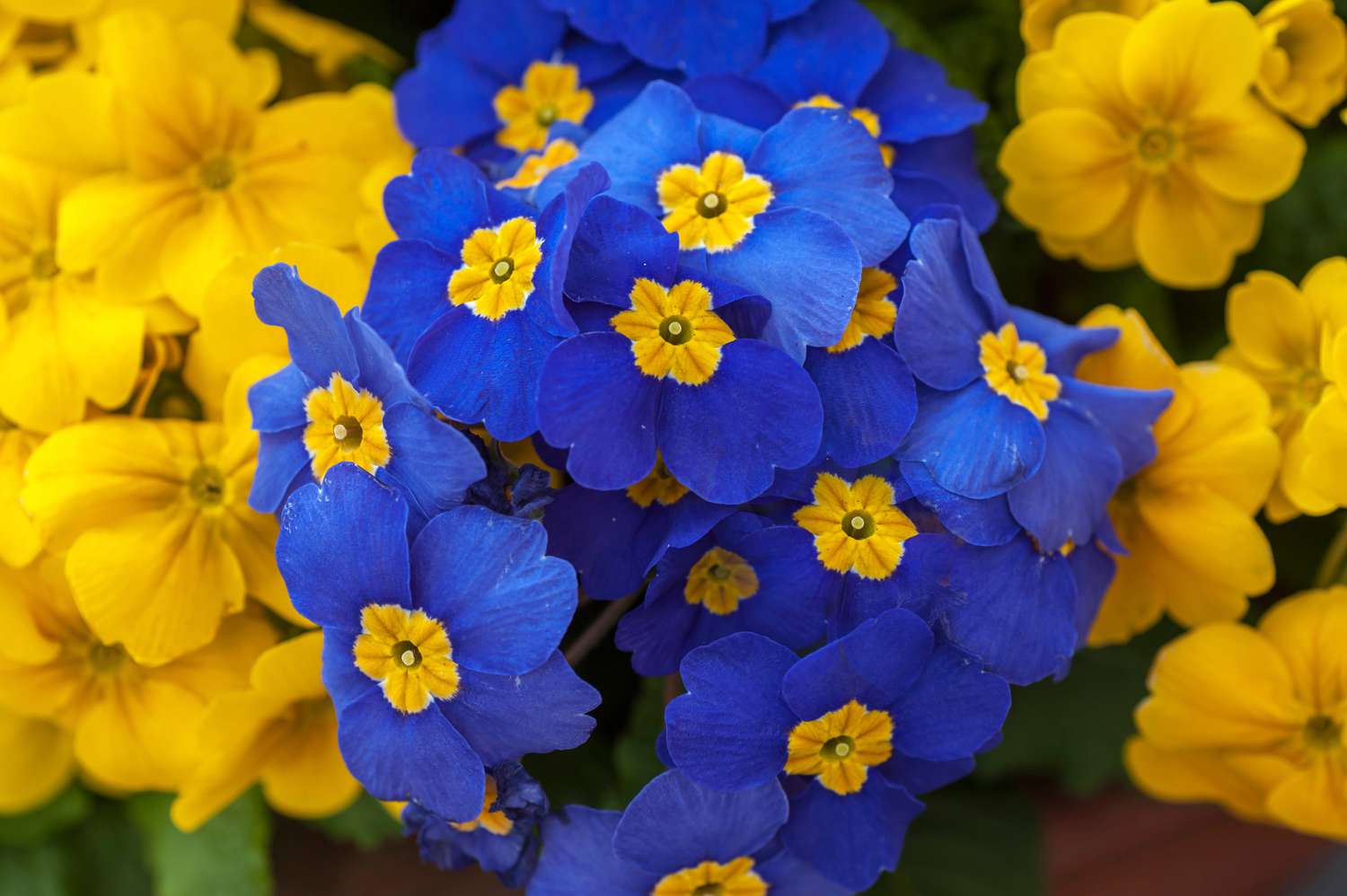Primroses
The Primula vulgaris, or primrose, are small, delicate, and sweetly scented flowers. Blooming in early spring (February–April), they truly fill the atmosphere with colors. They grow singly on short, slender stems and are usually pale yellow, and sometimes white and pink too.
Primroses – Everything About Primula

Primroses (Primula vulgaris) bloom early in Spring and brighten the atmosphere with vibrant colors. Small but significant – these flowers are really pretty to look at. Truly, they are the perfect choice if you are looking for a colorful gardening plant. You should also know that these are the secondary birth flowers for February. Moreover, they have earned this title because of their rich history and deep symbolism. Besides, you need to know a lot more about these flowers. And we have you covered for it.
Primroses – Facts & Description
Primroses (Primula vulgaris) bloom early in Spring and brighten the atmosphere with vibrant colors. Small but significant – these flowers are really pretty to look at. Truly, they are the perfect choice if you are looking for a colorful gardening plant. You should also know that these are the secondary birth flowers for February. Moreover, they have earned this title because of their rich history and deep symbolism. Besides, you need to know a lot more about these flowers. And we have you covered for it.
The Primula vulgaris, or primrose, are small, delicate, and sweetly scented flowers. Blooming in early spring (February–April), they truly fill the atmosphere with colors. They grow singly on short, slender stems and are usually pale yellow, and sometimes white and pink too. Other colors are also found; because of cultivation, you can get these flowers in dark pink, red, purple, yellow and also in multi-colored strains. The flowers are symmetrical and hermaphroditic (every flower has both male and female parts). Moreover, you should know that these flowers are an excellent choice for your cottage gardens.
Guide Info About Primroses
| Common Name | Primrose |
|---|---|
| Scientific Name | Primula vulgaris |
| Family Name | Primulaceae |
| Plant Type | Perennial, annual |
| Mature Size | 6–20 in. tall, 8–20 in. wide |
| Hardiness | 3-8 |
| Maintenance | Low |
| Exposure | Partial, Shade |
What are the Uses of Primroses?
Violets are not amazing just because they are beautiful. In fact, these flowers have so much more to offer. Do you know that you can use them in so many ways? If not, here are some of the ways mentioned in which primroses are commonly used:
- For ornamental purposes in borders, rock gardens, woodland settings
- The flowers and leaves of primroses are edible with a lettuce-like flavor
- The flowers can also be used to brew tea and make wine
- Can be used as a pain reliever and expectorant
Primroses as February Birth Flowers
Undoubtedly, violets as the primary birth flowers for February are absolutely right. After all, their symbolism makes every day of February special. Whether it’s Valentine’s Day or your loved one’s birthday, you can make all occasions meaningful and memorable. Incorporate these into your gifts and bring smiles to the faces of your friends and family.As aforementioned primroses were selected as February birth flowers because of its symbolism and history. After all, the meanings this flower conveys elevate the important occasions that land in February. Moreover, if your loved one is a February baby, incorporating primroses in their birthday gifts is a great idea, It will make them feel even more special and delighted. Plus, adding birth flowers to your celebrations makes them meaningful and unforgettable.
FAQs About Primroses
Primroses are a great choice if you are seeking to grow flowers because they are attractive, low maintenance, and fragrant. Plus, its flowers and leaves are edible.
Yes, primroses are scented. In fact, their delicate fragrance is most noticeable during their blooming period in early spring.
The ideal conditions for the growth and blooming of primroses is partial shade with moisture-retentive soil. Some species can also tolerate slightly dry conditions and some can grow in bogged gardens.

